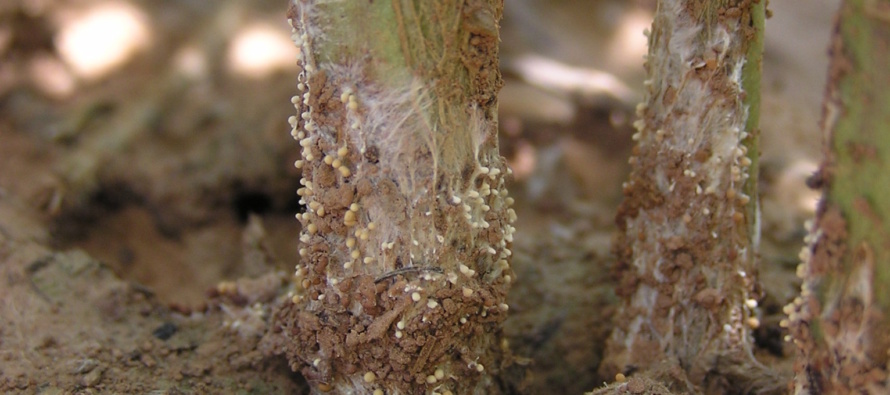Soybean Disease Update: June 18, 2016

Related Articles
- 2010 Soybean And Corn Variety Trial Data 3
- Rice Variety Trial Results For 2010, Plus Rice Research Report 0
- Evaluation of Peanut Prescription Rx Program in Mississippi 0
Latest Tweets
As of this morning (6/18/2016) I have not received a report of frogeye leaf spot in commercial soybean fields. Most of the photos I have received over the past two weeks exhibited some form of injury. Telling herbicide injury, as either drift or an on-farm event, apart from frogeye can be difficult. Leaves exhibiting yellow halos around lesions are not a result of frogeye leaf spot. Observe the underside of the leaf for the presence of fungal reproductive material. Make sure to check the disease package of soybean varieties. Determine whether or not the variety in question is frogeye leaf spot resistant or susceptible. Base fungicide management decisions on whether or not the variety is resistant.
For more specific information regarding variety response and fungicide management decisions see:
https://www.mississippi-crops.com/2016/06/18/soybean-r3r4-fungicide-selection/
Septoria brown spot
Similar to the 2015, increased reports of Septoria brown spot have been made this year from a few weeks after emergence until this morning. Early in the season, Septoria brown spot is one of the more commonly observed diseases. In general, brown spot stays in the lower most plant canopy. Leaves shaded out once the crop laps the middles in the bottom of the canopy are typically the ones that exhibit symptoms of brown spot. However, in some rare instances brown spot can move up the plant into the upper canopy. Leaves in the middle of the canopy that exhibit a yellow halo surrounding brown to maroon lesions are generally the result of brown spot. Determining the efficacy of fungicides in our production system over the years has been difficult. Septoria brown spot in the lower canopy is not generally targeted with an aerial application based on the location of the diseased leaves. Monitor fields for the presence of the disease above mid-canopy. Last year in particular, several variety trial locations had enough brown spot to make variety ratings. For information regarding the susceptibility of the 2015 OVT entries refer to the link above.
Southern blight
Over the past several years, southern blight seems to have been a more prevalent disease in our production system. Early in the season, young seedlings in groups down a row can die as a result of southern blight infection. Dead plants generally exhibit the presence of sclerotia at the soil line. The sclerotia can be observed as small, round, white balls. As the sclerotia age they tend to turn tan to a light brown in color. In addition to the sclerotia, thick, white, ropey mycelia can be present at the base of the plant and the soil line as well as growing up the main stem from the soil line. Environment does a good job of preventing significant losses as a result of southern blight. No management practices are necessary when the disease is observed.
Late-season infection in reproductively growing soybean plants can also be observed. However, interveinal chlorosis similar to that caused by SDS is more typically observed as a result of southern blight in older soybean plants. The same fungal reproductive structures can be observed at the base of the soil line in addition to internal vascular tissue staining inside the plant.
Soybean rust
Since the initial observations of soybean rust in MS several weeks ago, very little in the way of additional soybean rust has been observed in MS. At present, MS only contains six counties with soybean rust, all on kudzu (Adams, Amite, Franklin, Pike, Walthall, and Wilkinson counties). However, in the same period of time, states in our region, including AL, GA, and LA have observed additional soybean rust. In addition, last week the first soybean rust was observed on R2 soybean plants, planted in 2016, in LA not far from Baton Rouge. With the increased temperatures over the past 10 days, the spread of soybean rust will likely be reduced. Soybean rust prefers more moderate daytime temperatures and since initially observed in the U.S. in 2004 has struggled to quickly increase during periods of unfavorable temperatures (90F+). However, sentinel plots as well as kudzu and commercial soybean fields in reproductive growth stages continue to be scouted throughout MS.








Let me tell You a sad story ! There are no comments yet, but You can be first one to comment this article.
Write a comment